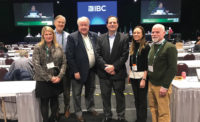The reality that more structures fail during construction than after completion spurred forensic engineer Robert Ratay, who died Jan. 3 in Manhattan, to champion the first load design standard for temporary and partially completed structures. For his work on the 2002 standard, ENR editors named Ratay a 2003 Top 25 Newsmaker.

Ratay, who succumbed to a long illness at age 83, argued that disasters often result from the failure of temporary structures, including but not limited to scaffolds and sidewalk sheds, because their design loads, inspection and maintenance are not considered as important as permanent structures.“One very serious problem is the definition of the roles and responsibilities and the checking and enforcement of those responsibilities,” Ratay said in 1987.
In addition to developing SEI/ASCE 37-02, Design Loads on Structures During Construction, Ratay was a prolific writer on failures and investigations. “I had the privilege and pleasure to work with Dr. Ratay [on] ASCE 37 and can assure you that the standard would not exist without his vision, leadership and perseverance,” says John Duntemann, a senior principal with Wiss, Janney, Elstner Associates.
A native of Hungary, Ratay received bachelor’s and master’s degrees in civil engineering in 1961 and ’62 and a doctorate in structural engineering in ’69. All his degrees are from the University of Massachusetts.
He was a full-time designer for 25 years. For the next quarter century, he was a forensic consultant and expert witness. He was also an educator at many institutions, including City College of CUNY, Pratt Institute and, most recently, Columbia University, where he developed and taught a graduate course on forensic engineering.






Post a comment to this article
Report Abusive Comment